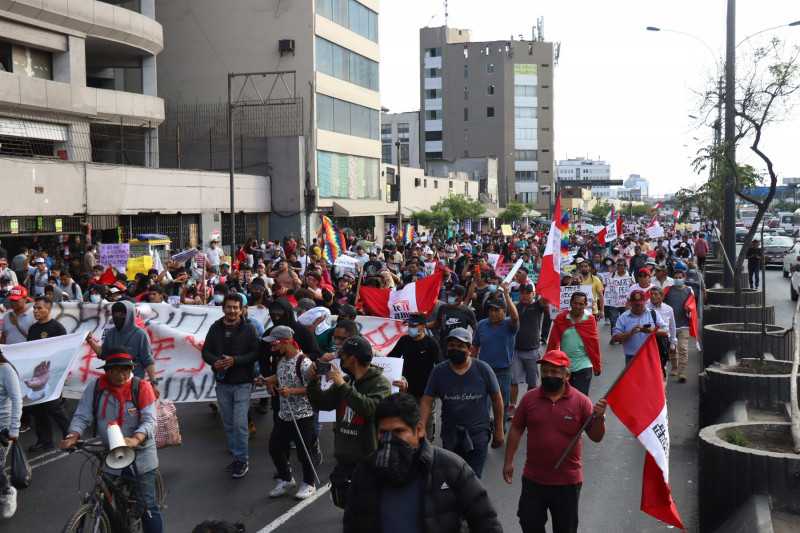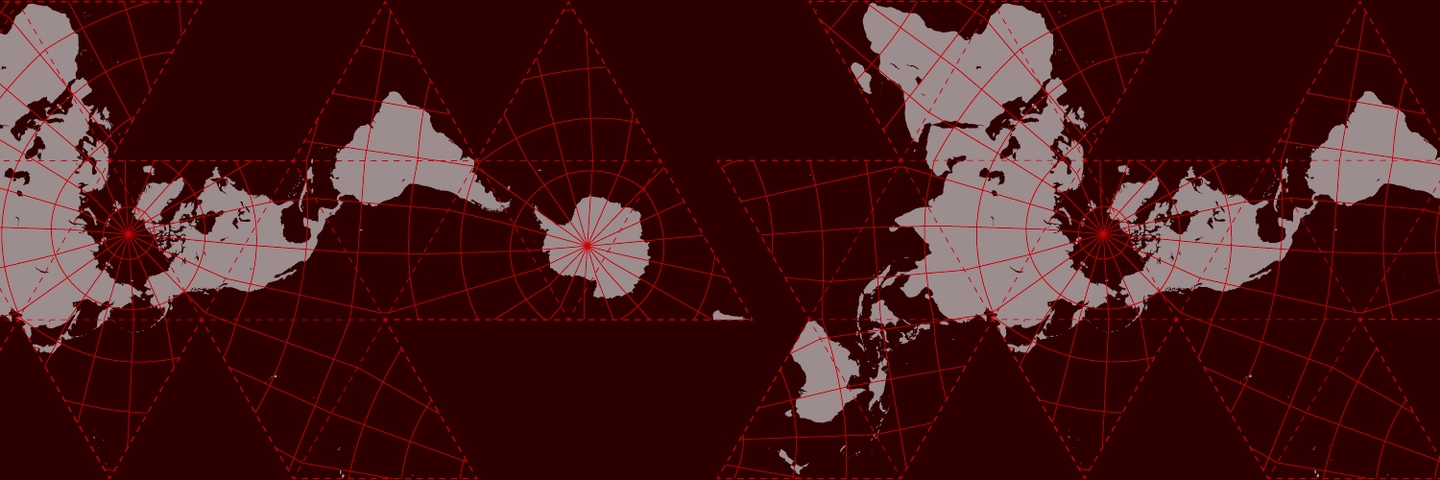
Ms. Boluarte gave the National Institute of Statistics and Information (INEI) the absurd order not to release its data on poverty, arguing that “there’s no need to report bad news” to the population (as though the realities of daily life weren’t enough to keep the population informed). Once the news broke of this order, that was enough for domestic and international pressure to force the hand of a dictator who, in addition to being willing to kill to keep herself in power, is a source of embarrassment to Peruvians.
However, Boluarte was right to worry about the data’s release. The poverty rate increased by 1.5 percent in Peru in 2023 alone; by year’s end, a total of 29 percent of Peruvians were impoverished, and 5.7 percent were living in extreme poverty, meaning that they did not even have enough to eat. While neighboring countries are returning to their pre-pandemic poverty levels, Peru is no better off now than it was during Covid. Put into numbers, this means that around 9,780,000 Peruvians are classified as poor, nearly 600,000 more than in 2022 and 3,300,000 more than before the pandemic.
In addition to these figures, another 31.4 percent of the population is considered vulnerable; in other words, on the verge of falling into poverty. The poverty rate grew for the second year in a row, following a 1.6 percent increase in 2022, something that hasn’t been recorded in a long time. Between 2022 and 2023, in other words, the number of poor people in Peru increased by more than one million.
Economists have varying explanations for these results, some of them valid, such as the political instability that characterizes a rudderless administration. Far-right members of Congress scheme to further their personal interests or those of specific groups or lobbies, exploiting the weakness of their puppet in the presidential palace. As a result, cabinet posts are shuffled daily, making it impossible to track the workings of the State apparatus. Also, a decline in world mineral prices has made a dent in Peru’s extraction-dependent economy. This is further complicated by global inflation from wars, which has affected the whole world. And we shouldn’t forget that, according to the Comptroller General of the Republic, corruption and official misconduct have diverted more than 24 billion soles (approximately €6 billion) from reaching the population.
Two sides of the same coin
Both micro- and macroeconomic data offer additional insights into the problem. On the one hand, of Peru’s 8,000 primary care public health posts, 97.6 percent have a shortage of medical personnel, some of them staffed by only one trained nurse. Pharmacy stocks are low, and medical equipment is basic if it exists at all, sometimes limited to a single stethoscope. Similarly, while the country has 55,358 educational establishments, 22 percent of them urban and 78 percent rural, 82 percent are in a state of poor repair. As another example, one million children in Peru under the age of five are anemic, and an additional 400,000 are chronically malnourished. The country’s generalized poverty exacerbates the situation.
On the other hand, Peru’s gross domestic product grew by 2.7 percent in 2022 over 2021, and contracted by only 0.55 percent in 2023. International reserves totaled approximately US$75 billion, underpinning a solid financial panorama. The country’s major banks reaped healthy profits in 2023, thanks to high interest rates and minimal interest for savings holders. The four big banks that control the financial market (BBVA, BCP, Scotiabank and Interbank) added 9.82 billion soles to their coffers in 2023 (€2.46 billion). Meanwhile, according to the Ministry of Foreign Trade and Tourism, exports earned US$64 billion for Peru in 2023, representing important gains for a sector that, it’s worth noting, enjoys many tax advantages.
Two realities share the same stage, in other words, and are forced to interact however hard they might try to ignore each other. Thus, despite this ongoing public crisis, Congress is about to pass new tax exemptions for agricultural exporters. And boosters for the business class and the ultraconservative politicians who have taken over the State repeat the same refrain: “The private sector needs more freedoms; too many regulations still stand in its way.” It’s the same recipe tried by Fujimori, and it’s blowing up in their faces. By contrast, public disapproval of the Administration, Congress and the 5 percent of the population that controls the economy and the State is at 90 percent.
Elsewhere, we have described these two realities to explain the popular movements of 2022 and 2023, which ended in tragedy for dozens of Peruvians.
Anything to stay in power
Dina Boluarte’s Rolexgate has faded from the news. The Attorney General’s office is diligently continuing its investigation, but as long as Boluarte is president she enjoys constitutional immunity, shielding her from all allegations. And only the national Congress could lift that immunity, through a political trial that would give her the right to a defense. Boluarte is also under investigation for the deaths of at least 50 rural residents during the 2022 and 2023 protests, but that case too must wait until she leaves office. It too could move forward only at Congress’s discretion, and the Supreme Court would have to preside over the trial.
All the protections that meant nothing when Pedro Castillo was in the presidential palace are now upheld for the woman who, as is now known, accepted expensive jewelry from the governor of Ayacucho in exchange for a few extra million in the public works budget for that region. An exceptional favor, especially for an official who has a record of failing to finish what he started.
Public money was also exchanged, this time in return for votes, with the far-right mayor of Lima, Opus Dei numerary and admitted flagellant Rafael López Aliaga. Faced with a growing public disapproval rating – already near 70 percent – the mayor proposed a series of monumental infrastructure projects, working through the City Council to approve around €1 billion in debt for questionable public works, the Comptroller General of the Republic found.
This debt, which would mortgage several vital sources of income for the city for 20 years or more, attracted the attention of the Fiscal Council, a technical arm of the Ministry of Economy and Finance. Annoyed, López Aliaga lashed out at the council’s president, economist Carlos Oliva, and complained to Boluarte. This coincided with the congressional deliberations over opposition allegations against Boluarte in the Rolex scandal, and as new Cabinet members waited for the legislature to ratify their appointments.
Ultimately, Carlos Oliva was dismissed, and the Ministry of Economy and Finance approved the debt deal. Then, lawmakers representing Mayor López’s party, Renovación Popular – aligned with Spain’s far-right Vox – became an effective shield for Boluarte. Their votes decisively shelved any charges against the president, at least temporarily.
A grateful Boluarte increased the budget for the Congress of the Republic, whose members promptly gave themselves a raise so they could enjoy even more comfortable lives.
Could the end be near for Boluarte?
Boluarte is running out of time, however. Congress needs her only as long as it takes to ensure its grip on the electoral process – because the far-right legislative majority would be wiped off the map in fair elections, and they know it. Congress has its goal in sight: The far right is close to controlling two pillars of the electoral system, the National Office of Electoral Processes (ONPE) and the National Registry of Identification and Civil Status (RENIEC), and now it only needs to control the National Jury of Elections (JNE). In the meantime, it is pushing through one law after another to lay the groundwork in its favor.
For her part, Boluarte dissolved the special DIVIAC (High-Complexity Investigations Division) team – but not in time, as the team’s impressively rigorous investigation ended in the arrest of her brother and attorney, who were accused of influence peddling and criminal organizing. The evidence amassed could implicate the president as well.
And so, while the capital and major media outlets dwell on the intrigues of the powerful – an important topic for sure, given the consequences – the real Peru, the majority, the poor, continues its neglect by society and the press, at the mercy of the criminal organizations that benefit from systemic corruption at all levels of the State and laws that allow them to act with impunity.
The Peru you won’t see in the news
Peru ranks 36th out of 193 countries on the 2023 Global Organized Crime Index. Robbery, extorsion, prostitution rings, drug trafficking, illegal mining and logging – in the Amazon especially, but also in what’s left of the dry coastal forests – continue to expand.
What’s more, every 16 hours, according to news reports, a police officer is arrested for soliciting bribes. And many of Peru’s regional governments have suspiciously mild policies toward organized criminal groups. The following are but a few examples.
In the region of La Libertad, whose governor, César Acuña, leads one of the parties that support the dictatorship, 81 murders were recorded in the first three months of 2024. The regional government’s spending on security couldn’t be more predictable or ineffective: more motorized vehicles, more police stations, zero money for primary prevention, zero for intelligence, zero for maintaining the new equipment funded, no comprehensive plan for combatting crime. The gravity of the situation in La Libertad and other parts of the country has been exacerbated by the presence of foreign criminal groups. The first wave was Venezuelan – especially the transnational criminal organization known as Tren de Aragua – but it was followed by Ecuadorian rings such as Los Lobos and Los Choneros, who fight local gangs for control over extorsion, prostitution and the retail drug trade. So far, they have been unable to wrest the large-scale cocaine trade from Mexico’s Sinaloa Cartel, which partners with Peruvian drug traffickers.
International criminal ties
After Brazil, Peru is home to the largest expanse of forest in the Amazon Basin, and certain regions such as Madre de Dios, which borders Bolivia and Brazil, have long functioned as fiefdoms for illegal activities. Around 25 years ago, the federal government decided to build a major highway and feeder roads in this remote and sparsely populated corner of the Amazon forest. As a result, thousands of settlers, most of them impoverished rural highlanders, flowed into the region. The new arrivals converted large swaths of land to agricultural uses ill-suited to this ecosystem, as well as coca cultivation, alluvial mining and timber cutting. For years, the government ignored or even promoted this invasion, applauding the initiative of small businesses and entrepreneurship. By so doing, it permitted the destruction of thousands of hectares of forest and an increase in forced labor, lawlessness and human trafficking. Despite having a population of barely 137,000 people, Madre de Dios releases more than 400 tons of mercury into the environment, and it reports more human trafficking cases than any other part of Peru. Between the early 1990s and 2023, the region’s population increased by 151 percent. The newcomers, many of them linked to the illegal activities mentioned, now elect most of the region’s authorities.
The Comando Vermelho (CV), one of Brazil’s most powerful criminal gangs, has taken control of large parts of Ucayali, another Amazonian region bordering that country. Specializing in extorsion, drug trafficking, murder for hire and kidnapping, the CV already controls the routes for exporting cocaine and illegal timber to Brazil and Bolivia through Ucayali. The organization originally operated on the border with Colombia, but rivalries with other powerful Brazilian gangs pushed it south to Ucayali. The CV uses various strategies to smuggle its drug shipments, including so-called mochileros, young indigenous men who trudge long distances through otherwise inaccessible territory into Brazil.
It is worth noting that in these and other cases, criminal organizations function as employers, filling the vacuum left by the State and the private sector. Drugs are also transported by small plane and along the major Ucayali and Amazon rivers. This group’s activities in the Abujao River basin, an area so remote that not even the government has penetrated there, affect the local indigenous communities, who face violent retaliation when they object to the recruitment of their young people into the criminal ranks. The Kakataibo, for example, already count several martyrs who were murdered for defending their land and their people.
The CV also operates in Pucallpa, Ucayali’s capital, where it practices extortion and murder for hire, in addition to completely controlling the city’s prison. Police operations against it have met with little success so far.
Resistance has been more successful in a few other places, such as the province of Condorcanqui in the Amazonas region. There, the Wampí indigenous group has managed to fend off illegal miners and leverage its autonomy to make citizen arrests, forcing the federal government to intervene. But theirs is a complicated task, as unemployment and the needs created by “civilization” tempt more and more indigenous youth to join criminal activities.
Taking stock
It is difficult to understand the links between Boluarte’s (mis)governance and the Congressional majority without placing them in the context of recent Peruvian history. Peru was one of the first laboratories for neoliberalism and radical conservatism (to use Natascha Strobl’s phrase), and its government is becoming ever more absent – unless extractive industries are at stake. It is a country whose leaders haven’t learned the lessons of terrorism, except to discredit others: the Shining Path guerrilla group grew by taking advantage of the State’s absence to apply their own brutal version of brutal justice and assume a kind of criminal authority where there was none. In today’s Peru, where informal activities represent 80 percent of the economy, this gap is being filled by organized crime, which needs no Milei to operate free of rules and regulations.
Photo: CTXT







